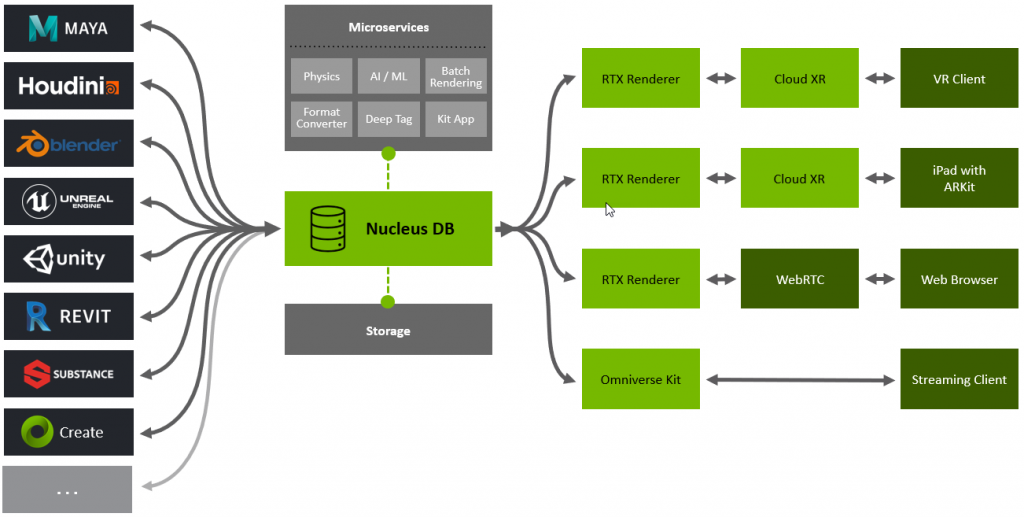If you are still new to Omniverse, it is described on the NVIDIA website as:
“a powerful, multi-GPU, real-time simulation and collaboration platform for 3D production pipelines based on Pixar’s Universal Scene Description (USD) and NVIDIA RTX. Omniverse aims for universal interoperability across different applications and 3D ecosystem vendors. It provides efficient real-time scene updates and is based on open-standards and protocols. The Omniverse Platform is designed to act as a hub, enabling new capabilities to be exposed as micro-services to any connected clients and applications.”
“Git for artists”
and elsewhere as “Git for artists”.
The Omniverse comes in five parts:
- Connect – glue for other content tools
- Nucleus – online database-powered services for real-time interaction and sharing
- Kit – developer blocks for building tools
- Simulation – adds physics and body and fluid dynamics
- RTX – use of GPUs for high-quality rendering
Omniverse pipeline

To get more of an understanding of how Omniverse is being used, take a look at Omniverse Machinima “which turns the whole platform into a storytelling tool for creative folks”.
The Marbles video below, which was first shown as part of NVIDIA CEO Jensen Huang’s “Kitchen Keynote” in May 2020, illustrates the power of NVIDIA RTX on the Omniverse Platform. A distributed team of artists and engineers assembled VFX+ quality assets into a high-quality, high-fidelity, fully physically simulated game level within Omniverse. Marbles runs on a single Quadro RTX 8000 simulating complex physics in a real-time ray traced world.
Source: CDM


